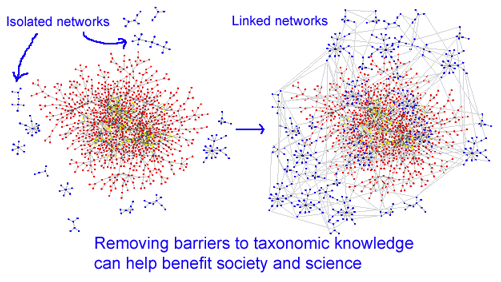 341 researchers from 44 countries gathered for the Second International Barcode of Life Conference, held at Academia Sinica, Tapei, Taiwan on 17-21 September 2007 (program, participants, and abstracts at www.dnabarcodes2007.org).
341 researchers from 44 countries gathered for the Second International Barcode of Life Conference, held at Academia Sinica, Tapei, Taiwan on 17-21 September 2007 (program, participants, and abstracts at www.dnabarcodes2007.org).
Conference presentations highlighted a thrilling array of progress on diverse scientific and practical fronts since the First International Barcode of Life at The Natural History Museum, London, in February 2005 (London Conference proceedings in themed issue Phil Trans R Soc 360: 2005 available through Consortium for Barcode of Life (CBOL) website. I found the Tapei conference to be a landmark demonstration of the value to society and science of a standardized, inexpensive approach to identifying species through DNA, ie DNA barcoding. The Economist’s 20 September 2007 piece “Name, rank, and serial number” recaps results so far and looks ahead to near future societal benefits.
Near the close of the conference, David Schindel, Executive Secretary for CBOL, referred to the DNA barcode initiative as “taxonomy without borders”. Just as removing security fences benefits African wildlife, standardized inexpensive technology for species identification, ie DNA barcoding, is helping remove barriers that balkanize taxonomy and limit public access to biological knowlege. The DNA barcode initiative, together with the Encyclopedia of Life which includes digitizing the world’s taxonomic literature are creating powerful new ways of seeing biodiversity, with benefits to society and science.
I look forward to a future in which the multiple sectors of taxonomic and biodiversity science are densely linked to each other and public users.
